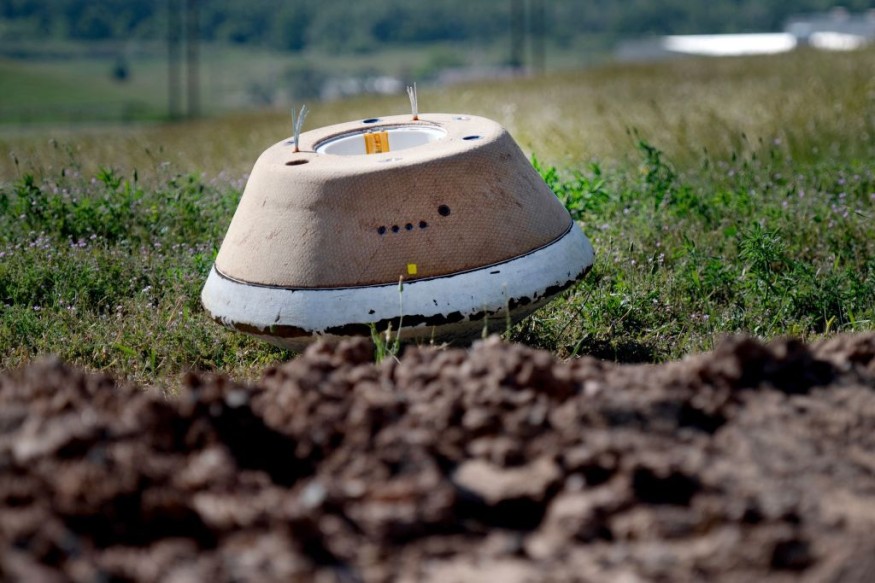NASA's Origins, Spectral Interpretation, Resource Identification, and Security-Regolith Explorer (OSIRIS-REx) is scheduled to release a capsule with asteroid samples for a Great Salt Lake Desert landing this month. This mission is the first to collect a space rock sample from asteroid Bennu in 2020. Scientists aim to gain insights into the Solar System's early history through this 4.5-billion-year-old material.

OSIRIS-REx Mission Brings Back Asteroid Sample From Bennu
Launched in 2016, the OSIRIS-REx spacecraft journeyed to the near-Earth asteroid Bennu, collecting surface samples. It's returning to Earth on September 24, 2023, releasing the capsule with Bennu pieces into Earth's atmosphere. A parachute descent will land it in Utah's test range, where the OSIRIS-REx team awaits.
This mission has profound scientific goals, including understanding planetary formation, life's origins, and improving asteroid impact awareness.
NASA's Goddard Space Flight Center manages the mission, while Dante Lauretta leads as principal investigator at the University of Arizona. Lockheed Martin Space Systems built the spacecraft, part of NASA's New Frontiers Program, managed by the Marshall Space Flight Center in Huntsville, Alabama, for the Science Mission Directorate in Washington.
The first asteroid sample collected in space and brought back to Earth by the US will be revealed at NASA's Johnson Space Center in Houston on October 11. The American space agency will hold a news conference at 11 a.m. EDT, which will be live-streamed on NASA Television, the NASA app, and the agency's website.
The event will include discussions by NASA's OSIRIS-REx science team regarding the initial analysis of the sample, expected to land in the Utah desert on September 24. Once the OSIRIS-REx spacecraft safely lands and enters Earth's atmosphere, NASA experts will retrieve the asteroid Bennu rocks and dust from the capsule and examine them at a pristine curation facility at NASA Johnson.
Challenges, Preparations, and Recovery Plans for the Asteroid Sample
The sample's protective capsule faces extreme challenges, enduring temperatures hotter than lava and entering Earth's atmosphere at nearly 36 times the speed of sound. As it descends, the capsule may encounter various weather conditions, including wind and rain, while ultimately landing in Utah's Great Salt Lake Desert.
A team of scientists and meteorologists will closely monitor the weather's impact on capsule recovery. The capsule was designed to withstand lightning and ice but remains vulnerable to wind, a major concern during parachute landing, which could affect its precise landing location within a designated area southwest of Salt Lake City.
For now, the landing range for OSIRIS-REx is considered safe and controlled, with previous missions like Stardust having used it. The team has also considered ground conditions, particularly the risk of heavy rains during late summer monsoon season in the desert, which could saturate the ground and make driving difficult for off-road vehicles assisting in capsule recovery.
Eric Nelson, a U.S. Army meteorologist, indicated that the successful Bonneville Speed Week event in August was a positive sign regarding the condition of the salt flats. To support the mission, weather balloons will be deployed in the days leading up to the landing, providing data on temperature, humidity, pressure, and wind to estimate the likely landing location.
The capsule's final journey begins when it separates from OSIRIS-REx above the West Coast, entering Earth's atmosphere at hypersonic speeds. It relies on a NASA-invented heat shield to withstand extreme temperatures. Radar and infrared tracking systems monitor its descent, aided by aircraft like a high-altitude WB-57 research plane.
The capsule, traveling at about 1,150 mph, uses a round parachute design for stability, increasing its chances of landing on target. Once recovered, the sample will be preserved and studied, while the landing itself will inform future space missions.
RELATED ARTICLE:
NASA Wraps Up Preparation for Arrival of OSIRIS-REx Asteroid Sample by Conducting Crucial Drop Test
Check out more news and information on Space in Science Times.
© 2025 ScienceTimes.com All rights reserved. Do not reproduce without permission. The window to the world of Science Times.











